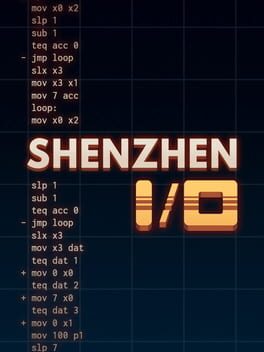More than any other genre, the puzzle game lives and dies by its tutorial. No one wants to spend too much time on problems that you're supposed to solve without much trouble. Likewise, finally realizing that a particular solution revolves around a mechanic that you weren't entirely familiar with might be the worst feeling a puzzle can produce. Traditionally, every second without full mechanical knowledge is a wasted one, but Shenzhen seems like a rejection of this concept. Instead of a typical tutorial, you're given a 50-page PDF that you have to refer to in order to find out what you can and can't do. Parts aren't immediately useful once you unlock them, at least apparently. Everything is kept within a layer of purposeful haze- when I was nearly finished with the main campaign, I had a realization about how wiring works that would've prevented about ninety percent of my prior struggles if I had figured it out earlier. I should've been frustrated over this, but instead it only left me with ideas on how to improve my past designs. Shenzhen has the foresight to lean into this feeling, explicitly incentivizing players to optimize both their code and their individual production costs. Puzzles aren't simply one-off affairs, but projects to keep coming back to with a new set of experience and thus a new perspective. From what I know about the other Zachtronics games, they're so niche that it seems like a small miracle that they exist in the first place. I can't imagine anyone enjoying this one without at least some familiarity in computer programming, but this also means it's a perfect game to experiment with this kind of unconventional structure. Anyone drawn to Shenzhen almost certainly already has the motivation to improve at the skills it promotes, which a more mainstream puzzle game would have to create from scratch. Instead, Shenzhen gets to focus on creating the best environment possible for utilizing this motivation. The joy of tinkering, the joy of fine-tuning.
